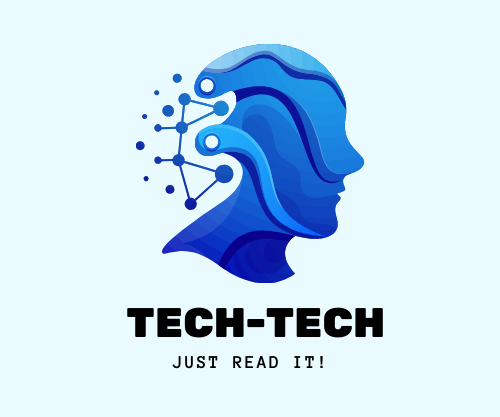Generative AI is revolutionizing industries, from content creation to drug discovery. If you want to build expertise in this domain, a structured learning path is essential. This guide outlines a 12-step roadmap that will take you from a beginner to an expert in Generative AI.
1. Start with the Fundamentals: What is Generative AI & Why Does it Matter?
Before diving into technicalities, understand what Generative AI is and why it’s a game-changer. Generative AI involves models that create new content, whether text, images, or even music. These models include technologies like Generative Adversarial Networks (GANs) and Large Language Models (LLMs). Learn about real-world applications, such as ChatGPT, DALL·E, and AlphaFold, to appreciate its impact.
2. Build Your Mathematical Foundation: Probability, Linear Algebra, and Calculus
A strong mathematical background is crucial for understanding AI algorithms. Focus on:
- Probability & Statistics – Essential for Bayesian models and data distributions.
- Linear Algebra – Vectors, matrices, eigenvalues, and singular value decomposition (SVD).
- Calculus – Differentiation and integration concepts, particularly gradient descent optimization.
- Optimization Techniques – Gradient Descent, Adam, and RMSprop used in training deep learning models.
3. Master Python & AI Frameworks: TensorFlow, PyTorch, NumPy
Python is the primary programming language for AI development. Learn:
- Core Python – Functions, loops, and data structures.
- NumPy & Pandas – Data manipulation and numerical computing.
- TensorFlow & PyTorch – The two most popular deep learning frameworks.
- Matplotlib & Seaborn – Visualization tools for analyzing AI model performance.
4. Learn Data Processing & Feature Engineering: The Backbone of AI Models
AI models thrive on quality data. Focus on:
- Data Cleaning – Handling missing values, removing outliers.
- Feature Engineering – Selecting and transforming features for better learning.
- Data Augmentation – Expanding datasets with synthetic data.
- Dimensionality Reduction – PCA and t-SNE techniques to optimize models.
5. Dive Deep into Neural Networks & Deep Learning: CNNs, RNNs, Transformers
Master neural networks to understand the core of Generative AI.
- Feedforward Networks (FNNs) – Basics of perceptrons and multilayer networks.
- Convolutional Neural Networks (CNNs) – Essential for image processing.
- Recurrent Neural Networks (RNNs) & LSTMs – Used in sequential data and NLP.
- Transformers & Attention Mechanism – The foundation of modern NLP models like GPT and BERT.
6. Understand Generative Models: VAEs, GANs, and Diffusion Models
Generative models create new data from existing distributions. Learn:
- Variational Autoencoders (VAEs) – Probabilistic models for generating variations of input data.
- Generative Adversarial Networks (GANs) – A framework where two networks compete to generate realistic content.
- Diffusion Models – The technology behind Stable Diffusion and DALL·E.
7. Explore Large Language Models (LLMs): GPT, BERT, and Beyond
LLMs are the backbone of modern AI advancements in NLP. Study:
- GPT (Generative Pre-trained Transformer) – The technology behind ChatGPT.
- BERT (Bidirectional Encoder Representations from Transformers) – Excels in contextual understanding.
- T5, BLOOM, and PaLM – Other cutting-edge LLM architectures.
- Fine-tuning LLMs – How to adapt pre-trained models for specific tasks.
8. Master Text Generation & NLP: Chatbots, Summarization, Translation
Text generation is one of the most popular applications of Generative AI. Focus on:
- Natural Language Processing (NLP) – Tokenization, embeddings, and sequence modeling.
- Chatbots & Conversational AI – Building intelligent virtual assistants.
- Summarization & Translation – Applications of text generation models.
- Ethical Considerations – Avoiding biases and ensuring responsible AI use in NLP.
9. Venture into Image & Video Generation: Stable Diffusion, DALL·E, Midjourney
Image and video synthesis is a rapidly evolving field. Learn:
- Stable Diffusion & DALL·E – AI-generated artwork and creativity.
- Midjourney & Runway ML – User-friendly AI art tools.
- Deepfake Technology – Understanding the mechanics and ethical concerns.
- Super-resolution & Image Inpainting – Enhancing and reconstructing images.
10. Embrace AI Ethics & Responsible Development: Bias, Fairness, and Security
As AI becomes more powerful, ethical considerations are crucial. Study:
- Bias in AI Models – How training data influences fairness.
- AI Transparency & Explainability – Making AI decisions interpretable.
- Security & Safety – Preventing adversarial attacks and ensuring robustness.
- Legal & Societal Implications – Regulatory frameworks for AI governance.
11. Learn AI Deployment & Optimization: Model Serving, Inference, and Scaling
Deploying AI models in real-world applications requires:
- Model Serving – Deploying models with TensorFlow Serving, FastAPI, or Flask.
- Inference Optimization – Techniques like quantization and pruning.
- Scaling AI Models – Using cloud services like AWS, GCP, and Azure.
- MLOps – Best practices for continuous integration and deployment (CI/CD) in AI workflows.
12. Apply Your Skills Through Hands-on Projects: Real-World Problem-Solving
The best way to solidify your knowledge is by working on practical projects. Some ideas include:
- Text Generation App – Build a chatbot or automated content generator.
- AI-Powered Image Creator – Use GANs or diffusion models to generate artwork.
- Music Composition with AI – Train AI models to compose original music.
- Medical AI Application – Use AI for disease diagnosis or drug discovery.
Final Thoughts: The Key to Success in Generative AI
Each stage of this roadmap builds upon the previous one, ensuring you develop a strong foundation before moving on to advanced topics. Generative AI is a vast and rapidly evolving field, so continuous learning and hands-on experimentation are key to mastering it.
Embark on this journey today, and in no time, you’ll be building your own cutting-edge AI models!
